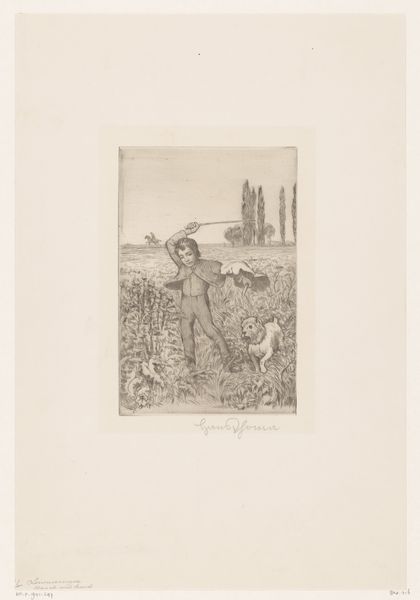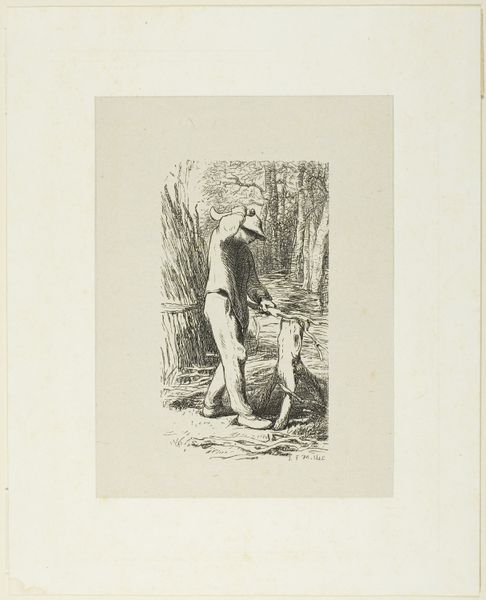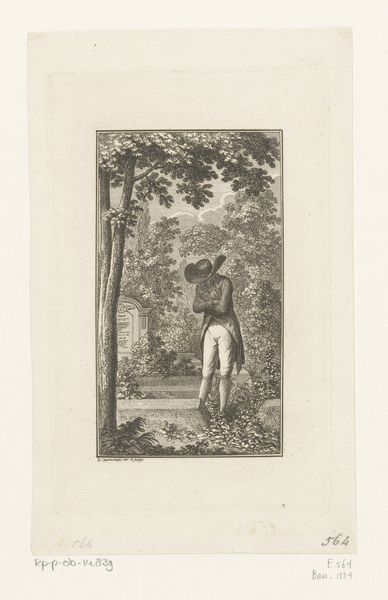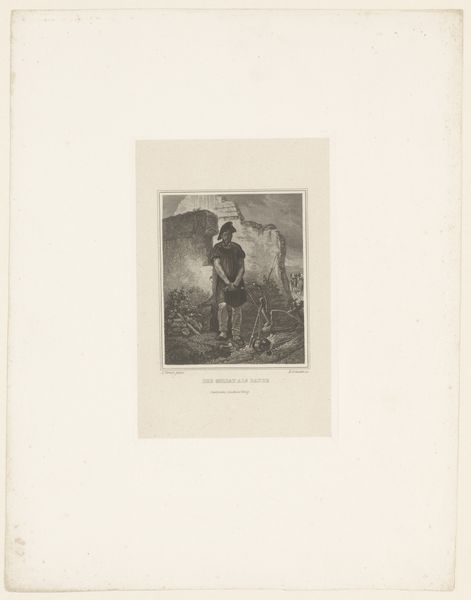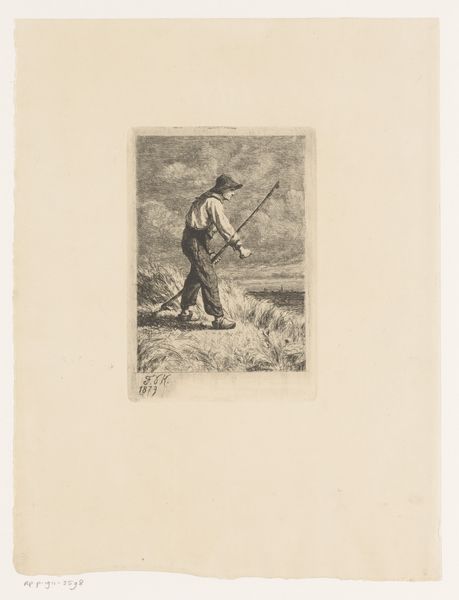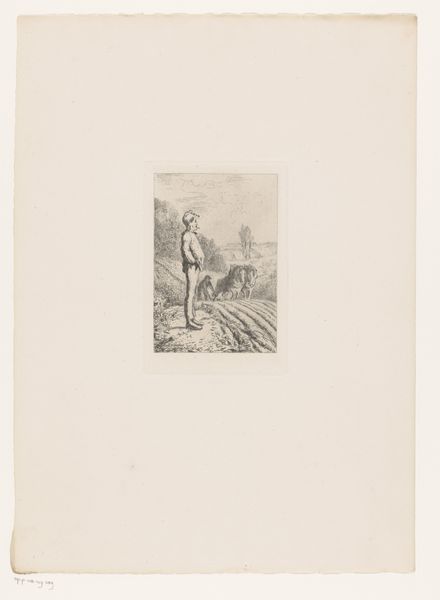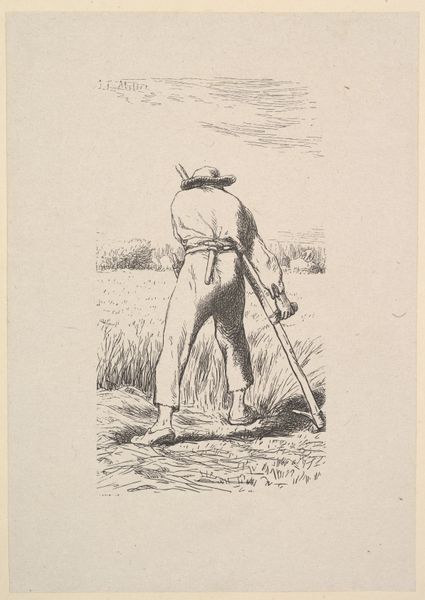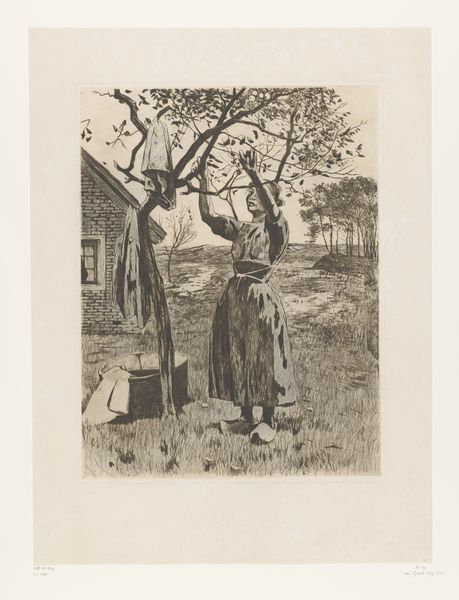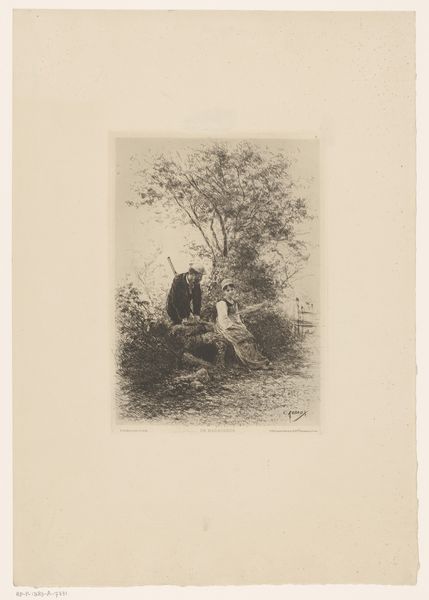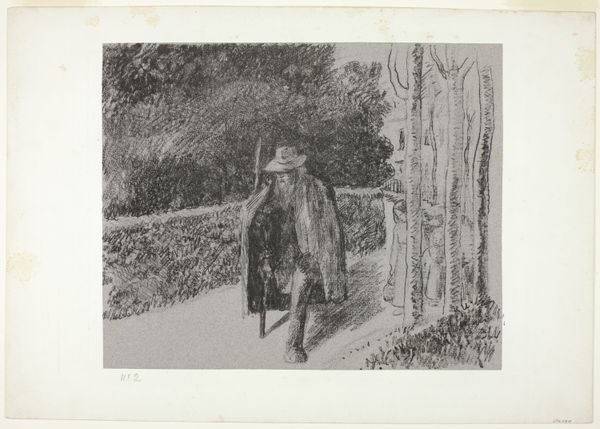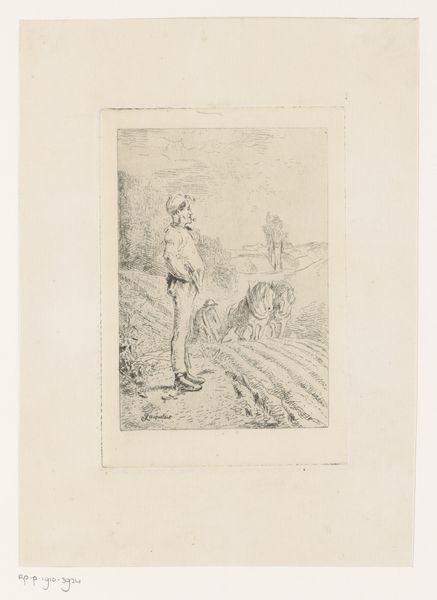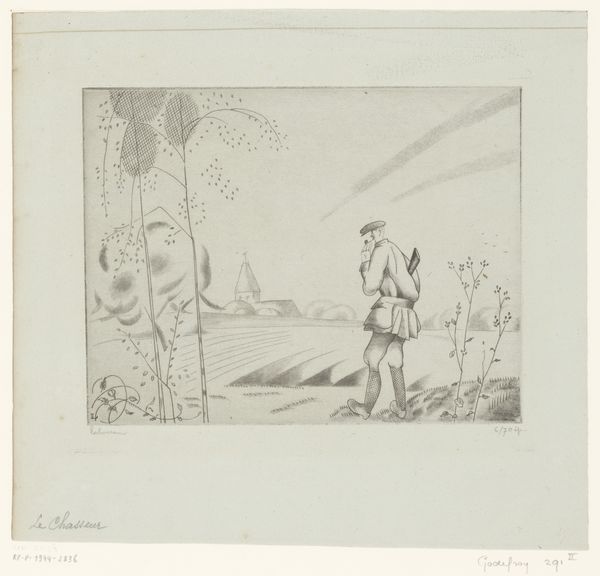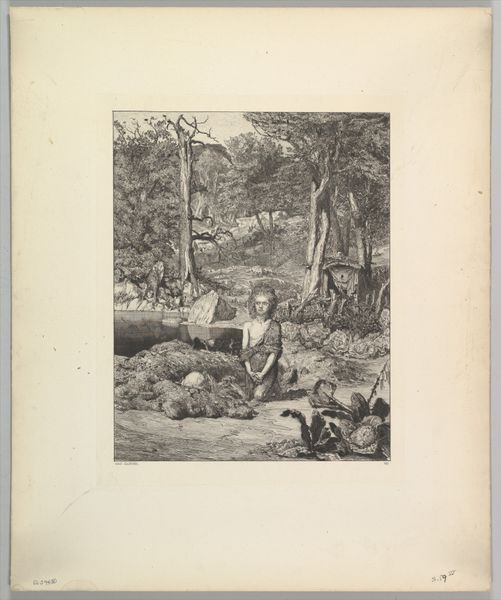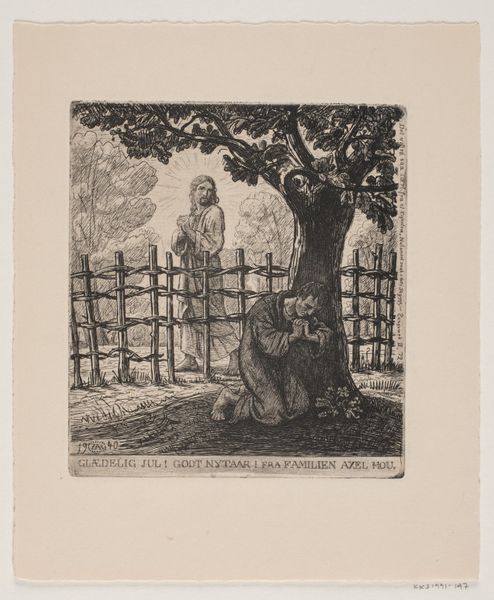
print, woodcut, wood-engraving
#
portrait
# print
#
landscape
#
woodcut
#
united-states
#
line
#
genre-painting
#
wood-engraving
#
realism
Dimensions: 6 13/16 x 5 3/16 in. (17.3 x 13.18 cm) (image)11 3/4 x 8 3/4 in. (29.85 x 22.23 cm) (sheet)
Copyright: Public Domain
Curator: Winslow Homer's wood engraving, "In the Fields," created in 1878, captures a moment of quiet contemplation amid agricultural labor. It is currently held at the Minneapolis Institute of Art. Editor: There’s something so stark yet hopeful about this. The figure gazing upwards feels suspended, both physically and metaphorically, between the weight of his work and some undefined aspiration. Curator: Homer’s choice of the woodcut medium is quite fitting. It echoes the simplicity and directness of rural life. The print captures the feel of sun-drenched, pre-industrial labor practices that continue to inform current attitudes. The labor, land ownership and the American economy all collide within a print of a solitary man in a field. Editor: The composition definitely speaks to labor. The sharp contrast achieved by the engraving, with the detailed texture of the grass, draws attention to the work, the tools—the scythe becomes a symbol of rural life's relentless cycles. This also feels directly connected to American printmaking and publication history of the era, as this would have reached wide audiences in popular magazines and newspapers. Curator: Absolutely, the print would have circulated widely. And considering the historical context, the post-Reconstruction era, the image carries implications about identity and labor in a rapidly changing America, which requires closer intersectional review to avoid glossing over inequalities. What is the role of the African-American worker? Where is their place in the landscape of 1878? This print calls to be considered through an ethical framework which prioritizes inclusivity. Editor: You are right to call for consideration about racial inclusivity. It's easy to slip into nostalgia when observing agrarian scenes. But you also make me think more about how the medium itself, wood engraving, was distributed; cheap to make, mass produced, for popular consumption by white middle class families. How were similar stories shared, visualized, produced, and made available to African American audiences? This leads to questions around consumerism. Curator: Indeed, and to consider the artwork's purpose and circulation is to situate it within the power dynamics of its time, revealing not only the visible labor but also the obscured social narratives. Editor: Right, the materials, production and context, remind us how our romantic perceptions are built through labor and its material legacy.
Comments
No comments
Be the first to comment and join the conversation on the ultimate creative platform.
